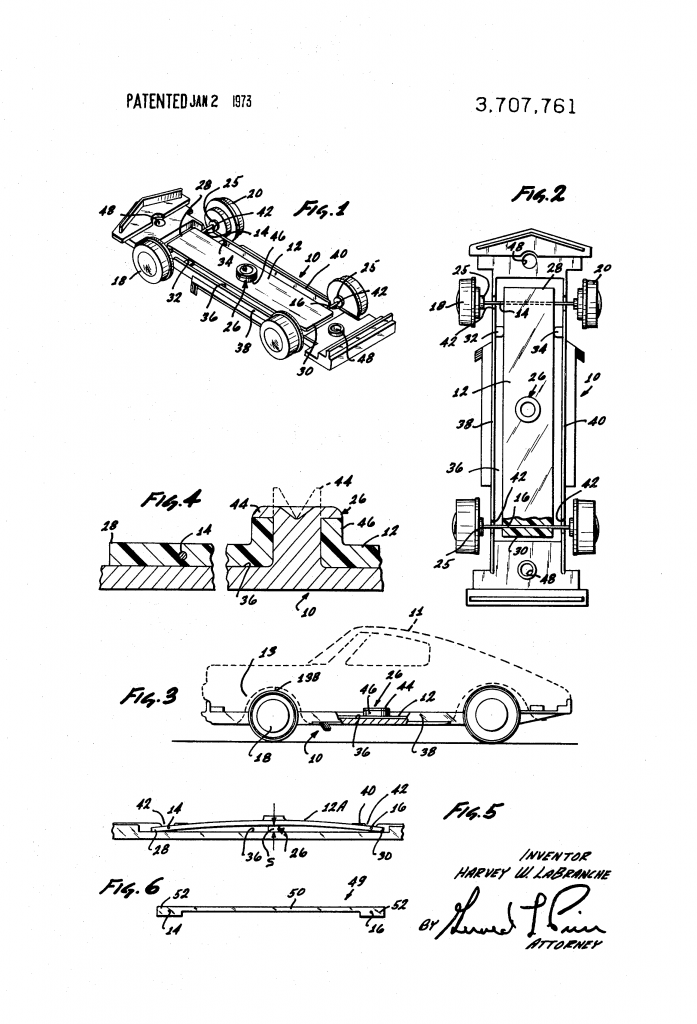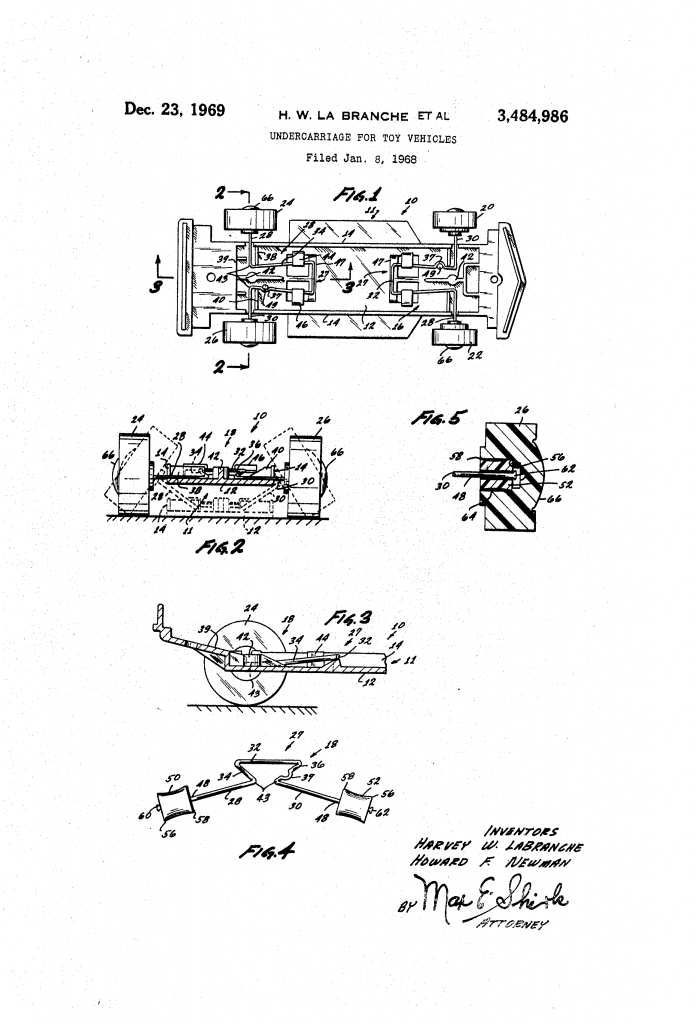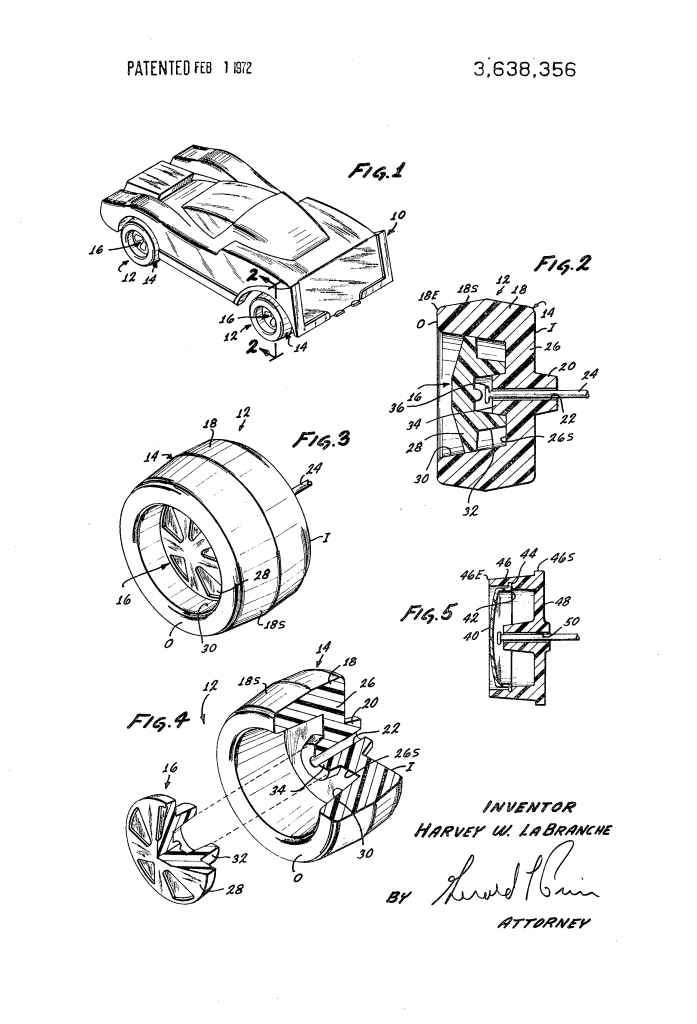Media | Articles
What put the Hot in Hot Wheels?
In January 1945, while World War II still raged, Elliot and Ruth Handler joined a partner, Harold “Matt” Matson, to start a company in the Handlers’ garage in Los Angeles. Matson and Elliot combined their nicknames to come up with Mattel Creations. The young company produced picture frames, later adding dollhouse furniture made from the resulting picture-frame scrap. Health problems forced Matson to sell his shares to the Handlers, who kept the name and focused on toys. In 1947, the company’s first hit was the Uke-A-Doodle, a child-size ukulele. Later, we’ll see how a musical instrument would ultimately contribute to the success of car enthusiasts’ favorite Mattel toys: Hot Wheels diecast model cars.
How successful? More than 4 billion sold to date, which makes it the best-selling toy car in history. It wasn’t Mattel’s first big hit, though.

Ruth Handler always had an active role in the company, serving as president, and it was her idea that launched Mattel into the big time. Inspired by a German doll named Bild Lilli, Ruth created an imaginatively proportioned fashion doll named after their daughter, Barbara’s, own nickname: “Barbie”. The Barbie doll’s elegant and adult design was only part of the toy’s success. Mattel also offered a complete line of clothing outfits, accessories, and even companion dolls such as Ken. Accessories, what today we call brand extensions, would also be a part of Hot Wheels’ success. Barbie had her clothes, while Hot Wheels had its neon-orange track and Super-Chargers.
By the mid-1960s, Barbie had made the Handlers wealthy; they were avid travellers, visiting Europe frequently. At that time, Elliot was looking for an “evergreen” toy that he could sell to boys, year after year, that would mirror the success of Barbie.
One of the gifts Elliot and Ruth brought back from Europe for their grandkids was a batch of 1:64 scale diecast model cars, likely made by Matchbox, Corgi, or Lesney in the U.K. Elliot, a keen observer of how children played, noticed that his grandchildren liked to play with them but that they were disappointed in how poorly the little cars rolled. Living in Southern California just as the hot-rod and the California Custom cultures were starting to boom, Handler also probably thought the models of British sedans were a bit boring.
Marketplace
Buy and sell classics with confidence

The original 16 Redline Hot Wheels models were introduced in 1968. That look was mostly due to the work and influence of Harry Bentley Bradley, a refugee from General Motors’ corporate design team. Bradley had already designed landmark custom cars such as the Dodge Deora while secretly moonlighting from his day job at GM. When Mattel offered Bradley a chance to return to his beloved native California, he jumped at the job. In addition to using some of his original designs including the Deora and the Chevy Fleetside based on his own customized El Camino, it was Bradley’s idea to reflect the California Custom look. Design cues included severely raked stances, hood scoops, big tires on custom wheels, side exhaust pipes, and wild Spectraflame colors. According to one version of the story, that El Camino even gave Hot Wheels its brand name, after someone admiring it in the Mattel parking lot remarked to Bradley, “Those are some hot wheels.” Prior to that, the working name of the project was Big Wheels, a name that Mattel competitor Marx Toys would later use on performance tricycles for kids.
Bradley’s contributions were invaluable, but had it not been for Harvey La Branche, Mattel’s director of product development engineering, Hot Wheels may never have gotten up to speed—literally.
Elliot Handler wanted Mattel’s diecast cars to roll faster than those he was familiar with from Europe. Diecast cars such as Matchbox typically used stiff steel axles that were rigidly mounted to the chassis, along with narrow tires that were made of either hard rubber or even metal. These created a lot of friction, so the cars couldn’t roll very fast. To allow for them to roll at all, the wheels were mounted rather loosely to the axles, which made them wobble and veer off from intended paths. The lack of suspension also meant that wheels and axles would break when subjected to boys’ rough-and-tumble play.

Another factor was the popularity of slot cars. Electric slot cars were huge in the 1960s, and while the big 1:32 and 1:24 cars were the thing at commercial slot-car tracks, home racers were more likely to be running little HO scale cars made by Aurora. Those Aurora cars had crazy-high scale speeds. While Hot Wheels were not going to have any onboard power (instead relying on Super-Charger accelerators to make the cars go fast around the tracks) there was still a need for speed. In fact, the original Hot Wheels cars were marketed with the tagline “The fastest metal cars in the world.”
It was La Branche, whose name is credited as the lead inventor on most of the relevant Hot Wheels patents, who apparently came up with the idea to replace those axles made of cold-rolled steel with those made of somewhat flexible steel wire, rigidly mounted inboard on the chassis. That allowed the outboard ends of the axles to flex. That gave Hot Wheels their suspension action. The narrow diameter of the polished wire, combined with Delrin bushings inside the hard plastic tires, also resulted in very low friction. Perhaps picking up a tip from the Boy Scouts’ Pinewood Derby racers, those tires were canted to only barely touch the track surface, further reducing rolling resistance. When assembled, the tires were cambered to encourage the car to roll straight. As with slot cars, the track would do the steering. The results were a claimed scale speed of 300-plus miles per hour and the ability to run fast enough to do loops and jumps and all the other cool things that Hot Wheels are famous for doing.
And the ukulele? What role did it play? Just prior to creating Hot Wheels, the team at Mattel was developing a uke-inspired child’s guitar that would stay in tune. Prior to going into production, however, the project was killed due to high costs. Materials, however, had already been sourced and Mattel had a lot of tempered-steel wire in stock. While Hot Wheels axles are often referred to as being made of piano wire, in fact the first Hot Wheels prototypes were made with axles made of guitar strings.




